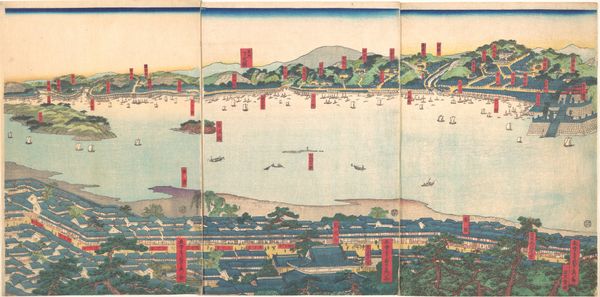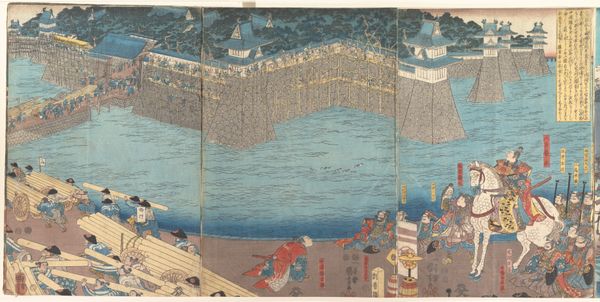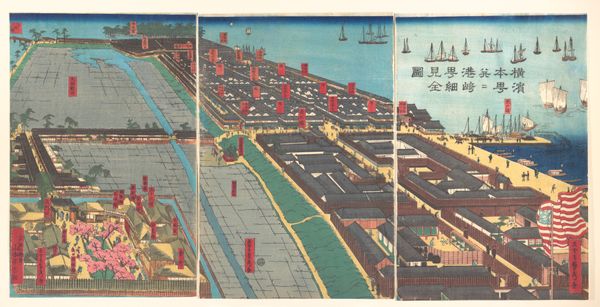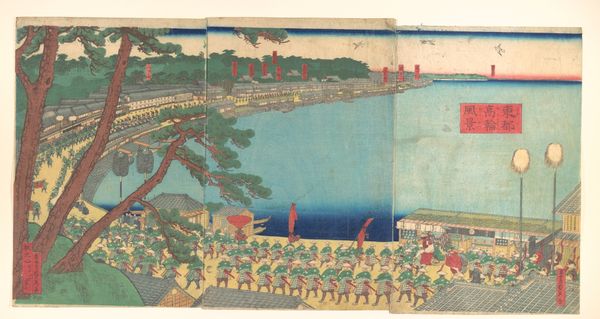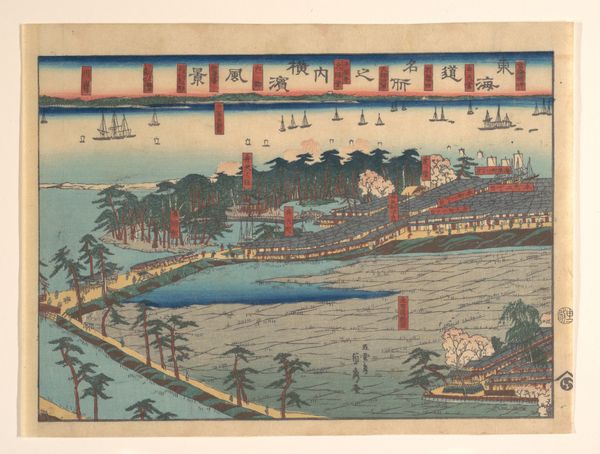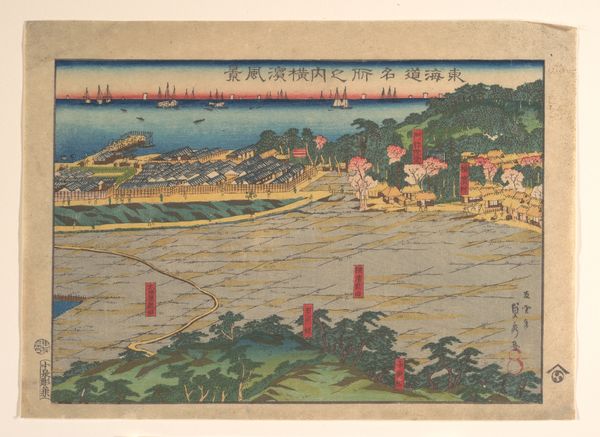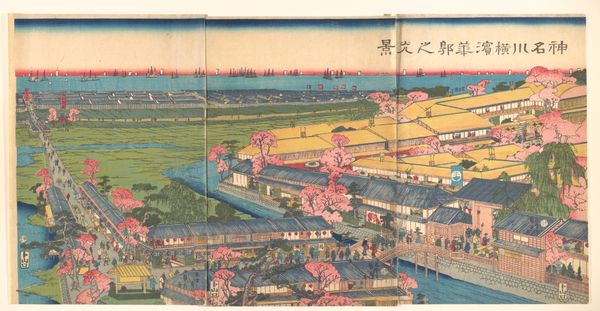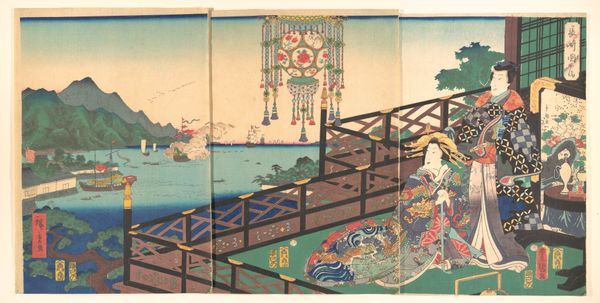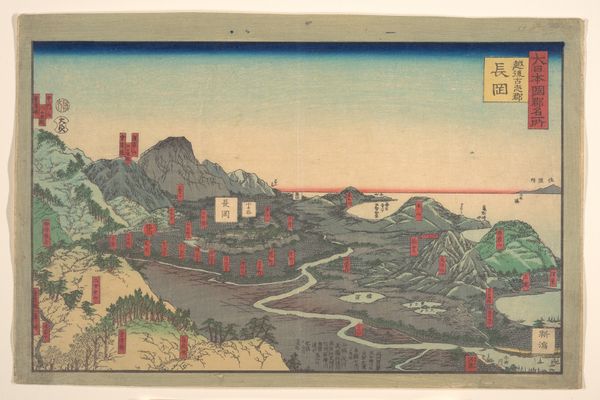
Panoramic View of Ryōgoku Bridge in the Summer 1807 - 1879
0:00
0:00
# print
#
asian-art
#
landscape
#
ukiyo-e
#
cityscape
Dimensions: Image (a): 13 3/4 x 9 1/2 in. (34.9 x 24.1 cm) Image (b): 13 3/4 x 9 1/2 in. (34.9 x 24.1 cm) Image (c): 14 x 9 1/2 in. (35.6 x 24.1 cm)
Copyright: Public Domain
Curator: This work is "Panoramic View of Ryōgoku Bridge in the Summer" attributed to Utagawa Sadahide, though the dating is broad, ranging from 1807 to 1879. The medium is a woodblock print, specifically ukiyo-e. Editor: It's intensely vibrant and dynamic, almost overwhelmingly so! The sheer volume of people crammed onto that bridge and packed into boats creates a buzzing, restless energy. Curator: Precisely. Consider the labour involved in producing these ukiyo-e prints. The artist, of course, but also the woodblock carvers and printers. Each color requires a separate block, demanding meticulous registration. And let’s not forget the paper itself and the sourcing of the inks. The scale of production suggests a considerable market for these prints. Editor: I am especially interested in how these prints represent and reinforce specific societal hierarchies. The people packed like sardines onto the bridge contrast sharply with the presumably wealthier patrons enjoying the spectacle from their pleasure boats. Are we seeing a deliberate commentary on social stratification? I am compelled to wonder whether this depicts an attempt to reflect labor imbalances. Curator: Or perhaps it's simply a depiction of the burgeoning urban culture of Edo, now Tokyo. The bridge, a vital piece of infrastructure, and the river, the arteries of commerce and transport. The banners and the red sun almost evoke celebration and maybe ritual activity tied to place. I cannot deny, however, the undercurrents that run through art that make statements through social positioning. Editor: What interests me, and what can become frustrating, is the lack of available material information about who was commissioned to produce works like these, how much they got paid, how many copies they were sold. Without these data, speculation about whether these prints served specific commercial purposes, for which classes of people and on what political ends is unfortunately speculation. I have my hopes that scholarship keeps producing insight and information in this important respect. Curator: A point well-made. Regardless, the impact is still something to behold. The bustling panorama does draw the viewer right into a specific space of time. It is almost possible to imagine sounds and feeling from all those bustling peoples! Editor: Yes, a layered landscape that can hold diverse points of view simultaneously. It gives us an incredible opportunity to question traditional notions of identity, class and visibility as seen across cultures today.
Comments
No comments
Be the first to comment and join the conversation on the ultimate creative platform.
